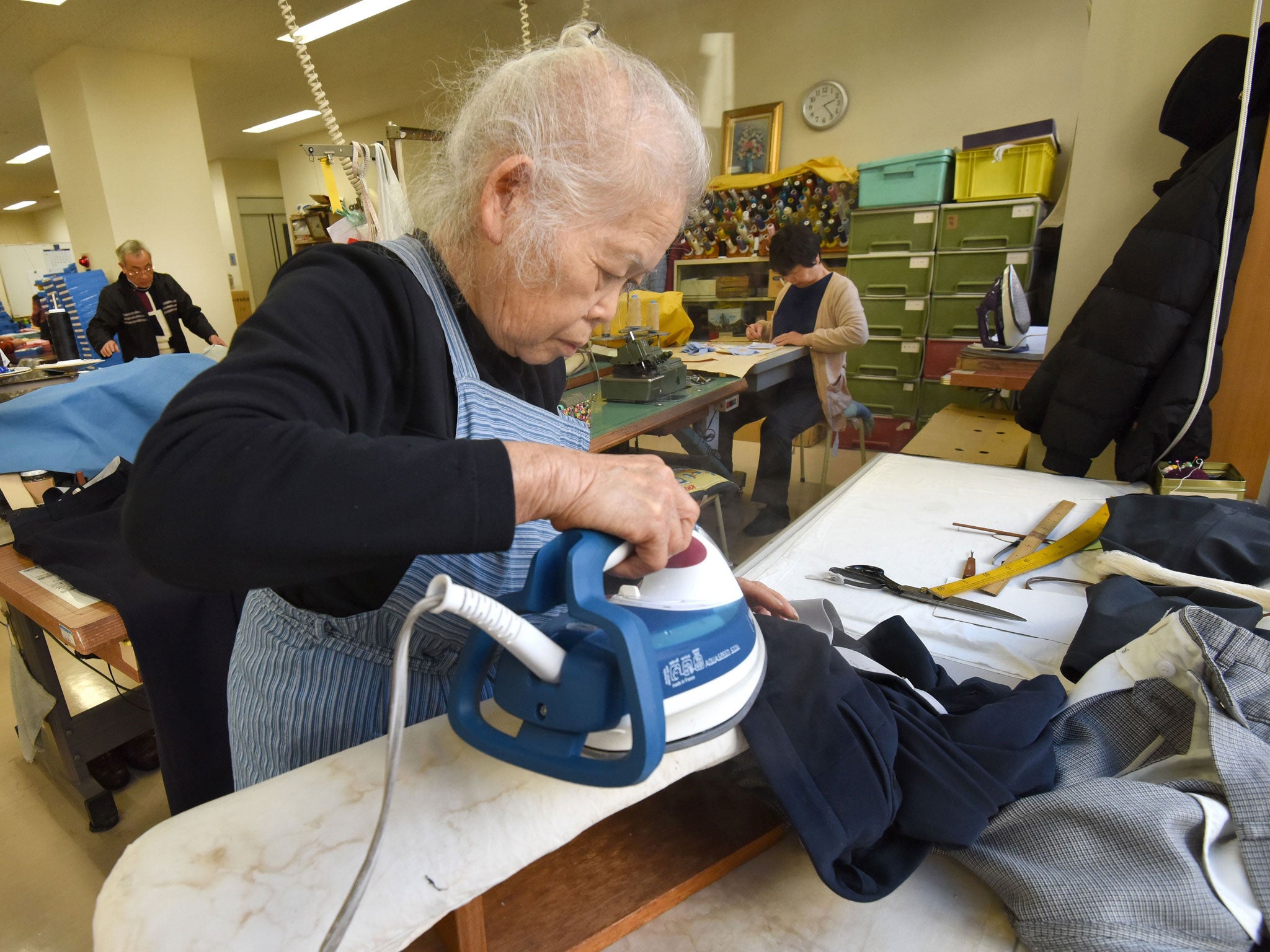What can Singapore Learn from Japan’s Retirement Crisis?
Japan's retirement crisis serves as a critical warning for Singapore as both nations face rapid population aging. Japan's experience demonstrates that even well-designed pension systems can become unsustainable under demographic pressure.
Japan already has an estimated 30% of people aged 65 and above. Most projections show a continued rise toward about 40% over the coming decades.
Singapore is top in Asia in Mercer’s 2024 pension index (top-5 globally) and recorded a resident TFR of 0.97 in 2023; it is officially projected to reach “super-aged” status around 2026.
This analysis provides actionable lessons from Japan's crisis to strengthen Singapore's retirement preparedness.

Japan's Rising Elderly Working Poverty Rate (1995-2011)
| Issue | Current Status | Impact |
|---|---|---|
| Basic Pension Adequacy | Basic pension: ¥65,000/month (approx. S$566/month) - inadequate for living | Need S$10,000/year but only get about S$5000 - S$7,000 from basic pension |
| Gender Pension Gap | Men: ¥167,000/month, (approx. S$1,454/month; | |
| Women: ¥110,000/month average (approx. S$1000/month) | 4x more likely for women to live alone in old age | |
| Elderly Working Poverty Rate | Relative poverty among 65+ ≈ ~19–20% (OECD style measures) | Elderly forced to work past retirement age |
| Single Elderly Women Poverty | 44.1% of single elderly women live in poverty | Patriarchal pension system disadvantages women |
| Premium Non-Payment Rate | Increasing yearly as the system becoming "hollow" | Threatens system sustainability |
| Social Security Contributions as % GDP | Total social security benefit expenditure ≈ 24–25% of GDP (recent IPSS / Stat. Bureau figures). | Heavy burden on workers and employers |
Japan's Retirement Crisis Analysis
Demographic Challenges and Aging Statistics
Japan's demographic transformation represents one of the most dramatic shifts in modern history:
Current demographics: ≈ 30% of the population is 65+; people 80+ now exceed 10% of the population.
Fertility: TFR ≈ 1.20 (2023), which is well below replacement and one of the lowest in the OECD.
Projections: Multiple projection series show the 65+ share rising toward ~40% over the coming decades, but the exact year depends on assumptions (some older scenarios cited ~2055; recent official central projections tend to place ~40% later).
Support ratio/workforce impact: The working-age per elderly ratio has fallen sharply (roughly 2:1 today) and is projected to decline further; the mainstream OECD/UN projections show a much lower support ratio by mid-century (often ~1.3–1.4).

Pension System Structure and Failures
Japan operates a three-pillar pension system similar to other developed nations:
The first pillar, Kokumin Nenkin (National Pension), covers residents aged 20--59 (i.e., compulsory enrolment from age 20; contributions are normally paid up to age 59). The full basic pension for a full 40 years of contributions is about ¥777,800 (SGD 6,770.06)--¥816,000 (SGD 7,103.20) per year in recent official/OECD figures.
The Basic Pension’s financing formally includes a national subsidy that covers roughly one-half of total basic pension outlays (the remainder is covered by contributions and related transfers from Employees’ Pension schemes).
The second pillar, Kosei Nenkin Employees’ Pension Insurance covers salaried employees (Category-2) while they are employed; contributions are income-related. The statutory total contribution rate was set at 18.3% (fixed from Sep 2017) and is shared equally between employer and employee (≈9.15% each). Benefits are earnings-related and calculated from contribution years and career earnings.
Finally, the third pillar consists of corporate pensions, private DC schemes, and individual plans such as iDeCos privately funded and not financed by government pension transfers.
Japan’s public pensions are principally financed on a PAYG basis (current contributions and government subsidy finance benefits). But large reserve assets exist and are managed by the Government Pension Investment Fund (GPIF). GPIF holds hundreds of trillions of yen (AUM ~¥250 trillion (SGD 2,175,000,000)--¥260 trillion (SGD 2,262,000,000) in recent reports) and invests pension reserves for the public pension system.
Economic Impacts and Fiscal Burden
Japan's retirement crisis has created severe economic pressures:
- Social spending: Japan’s public social spending has roughly doubled since the early 1990s, rising from about ≈11–13% of GDP then to roughly ≈22–25% of GDP in recent years (series vary by accounting standard).
- Public debt: Japan’s gross public debt is very large, in the ~230–255% of GDP range depending on measure and year (the highest among major OECD countries).
- Economic Stagnation: GDP has remained largely stagnant for over two decades, limiting its contribution capacity
- Deflationary Environment: Persistent low inflation/deflation reduces wage growth and economic dynamism
- Senior Employment Crisis: Quality employment opportunities for seniors remain limited despite policy initiatives

Policy Responses and Reforms
Japan has implemented several reform measures with mixed results. The retirement age has been extended from 60 to 65, with full implementation expected by April 2025.
The 2004 pension reforms indexed benefits to economic and demographic conditions to prevent unrestrained premium growth.
Additionally, the Long-Term Care Insurance, established in 2000, provides comprehensive coverage for elderly care needs.
Senior employment initiatives have introduced policies aimed at extending working lives and improving age-friendly employment opportunities.
Furthermore, Japan is focusing on innovation by investing in MedTech, care robotics, and aging-related industries.
Singapore's Current Situation
CPF System Overview
Singapore's Central Provident Fund represents a unique approach to retirement financing:
| CPF Feature | Description | Advantage over Japan |
|---|---|---|
| Fully Funded System | Individual accounts with actual reserves | Not vulnerable to demographic shifts |
| Multi-Purpose Design | Covers retirement, housing, healthcare, education | Holistic approach to life-cycle needs |
| CPF LIFE | Longevity insurance providing lifelong payouts | Risk pooling for longevity protection |
| MediShield Life | Universal health insurance coverage | Protection against healthcare cost shocks |
CPF Adequacy Assessment
According to the Ministry of Manpower analysis, the CPF system demonstrates strong performance:
- Replacement Rates: 70% for median male workers, 64% for median female workers
- Including Housing: 78% for median males, 74% for median females when imputed rent is included
- Low-Income Support: Workfare Income Supplement boosts replacement rates to over 90% for the lowest income deciles
- International Comparison: Rates comparable to OECD averages despite pre-retirement housing withdrawals
Demographic Trends and Challenges
Singapore faces demographic pressures similar to Japan:
- Ultra-Low Fertility: Total fertility rate of 0.97 in 2023, a historic low
- Rapid Aging: Transition to a super-aged society (21% over 65) by 2026
- Future Projections: One in four residents will be over 65 by 2030
- Workforce Dependency: Increasing reliance on foreign talent to maintain economic growth
Current Performance vs Japan
| Metric | Singapore | Japan | Singapore Advantage |
|---|---|---|---|
| Global Pension Ranking | Top 10, which is a high score (Mercer: Singapore among the best; overall index ~78.7, grade B+). | Mid-pack for Japan ~54–55 (C) on Mercer index. | Significantly higher performance |
| System Type | Mandatory defined-contribution with national annuity (CPF + CPF LIFE) which is funded accumulations, forced saving, CPF LIFE provides lifelong payouts | Primarily PAYG public pension (three-tier: Basic, employment-related, corporate); public pensions rely on inter-generational contributions with some funded components (GPIF). | Demographic resilience |
| Government Debt | High gross debt (used strategically) where recent series show ~170%–175% of GDP (gross) (Singapore issues debt for domestic markets; net position differs). | Very high gross debt, among the highest worldwide; recent estimates/projections put Japan’s gross public debt in the ~225–255% range depending on measure and year. | Fiscal sustainability |
| Economic Growth | Generally positive, trade-dependent with strong 2024 recovery; growth outlook sensitive to global trade/tech cycles (IMF Article) | Low/growth-challenged over the last 2–3 decades (“lost decades” theme); very slow trend growth, though periodic recoveries occur. | Economic dynamism |
| Details | Singapore Current Status | Japan’s Experience |
|---|---|---|
| Retirement Savings System | CPF (mandatory DC + CPF LIFE annuity). ~70% of cohort turning 55 in 2024 met their Required Retirement Sum (RRS/BRS) | PAYG-based public pension with funded components (GPIF) + LTCI for long-term care. Benefits widely considered modest for some cohorts. |
| Government Approach | Whole-of-government / cross-ministry ageing strategy (Action Plan for Successful Ageing; integrated community care pilots). | More incremental/sectoral reforms historically (major LTCI reform in 2000; ongoing adjustments to pension schemes). |
| Elderly Poverty Trends | Relative poverty rose quickly in the 2010s with studies report a 74.3% increase in poverty among the elderly from 2012–2015 (research summaries). | Elderly relative poverty ≈ 20% (OECD-style half-median measure cited ~20% for Japan); above OECD average (~14%). |
| Policy Timing | Singapore: earlier, coordinated policy focus (Action Plan 2015, refreshed 2023) while share of elderly was lower with proactive planning and whole-of-government pilots. | Japan: major reforms (e.g., LTCI 2000) were reactive to rapid ageing; pension reforms are incremental and politically sensitive. |
| Workforce Participation | Older-worker participation is rising but varies by age band: employment rate 60–64 ≈ 67.9% (2024); 65+ employment ≈ 31.7% (2024). | Japan: high employment among older cohorts relative to many peers but persistent old-age income adequacy problems; policy encourages continued work where possible. |
| Healthcare Integration | Singapore: increasing integration of health + social care in community (Active Ageing Hubs, community hospitals, pilot integrated services). | Japan: long-term care insurance (LTCI) established 2000, separating LTC financing from medical insurance and expanding community/home care; strong formal LTC system. |
Notes:
GPIF — Government Pension Investment Fund (Japan’s large public pension asset manager). RRS — Required Retirement Sum (term sometimes used interchangeably with CPF retirement-sum concepts; CPF officially uses Basic/Full/Enhanced Retirement Sum — BRS/FRS/ERS).
FRS — Full Retirement Sum (CPF).
ERS — Enhanced Retirement Sum (CPF).
DC — Defined-Contribution (pension scheme type where contributions are defined; retirement payout depends on accumulated contributions).
LTCI — Long-Term Care Insurance (Japan’s system introduced in 2000 to finance long-term care services). PMC
OECD — Organisation for Economic Co-operation and Development (international economic organisation). OECD
BOJ — Bank of Japan (Japan’s central bank).
MHLW — Ministry of Health, Labour and Welfare (Japan).
IPSS — Institute for Population and Social Security Research (Japan) — a research body on demographics and social security.
SWF / SWFs — Sovereign Wealth Fund(s) (state-owned investment funds). Investopedia
Mercer — Mercer (global consulting firm; often cited for the Mercer CFA Institute Global Pension Index).
Key Lessons for Singapore
What Went Wrong in Japan
Japan's pension system has faced several challenges that have contributed to its difficulties. Firstly, there is an over-reliance on Pay-As-You-Go (PAYG) systems, where current contributions are used to pay current retirees, leading to unsustainable obligations.
Additionally, there has been an inadequate accumulation of reserves, making it difficult to navigate demographic transitions. Policy complacency has also played a role, with delayed recognition and response to emerging demographic trends.
Meanwhile, the country's economic stagnation has further compounded the issue, as it has struggled to generate sufficient growth to support an aging population.
Lastly, restrictive immigration policies have limited the influx of workers, despite ongoing workforce shortages.

Singapore's Advantages and Vulnerabilities
Advantages:
- Fully Funded System: CPF provides demographic resilience through individual accounts
- Economic Openness: Strategic immigration policies to address workforce gaps
- Integrated Approach: CPF covers housing, healthcare, and retirement holistically
- Policy Agility: Demonstrated ability to adapt policies proactively
- Strong Institutions: Effective governance and long-term planning capabilities
Vulnerabilities:
- Housing-Retirement Trade-off: CPF housing withdrawals may compromise retirement adequacy
- Minimum Sum Limitations: Current annuitisation caps may be insufficient for higher-income earners
- Foreign Talent Dependency: Social tensions over immigration could limit policy flexibility
- External Economic Shocks: Trade-dependent economy is vulnerable to global disruptions

Critical Lessons for Singapore
Strengthen Retirement Adequacy Immediately
Japan’s pension shortfalls and high elderly poverty underline the need for livable pension incomes. In Singapore, the RSS (Retirement Sum Scheme) safety floor was raised to S$350/month (1 Jun 2023).
However, S$350 remains a modest safety net compared with estimated BRS (Basic Retirement Sum)-level payouts (≈S$850+ for recent cohorts), so adequacy concerns remain as costs rise.
The government's recent measures to increase contribution rates for senior workers and enhance retirement bonuses are steps in the right direction, but more may be needed.
Address Gender Inequality Proactively
Japan's patriarchal pension system created devastating inequality for women. Singapore must ensure its system doesn't replicate these patterns, particularly as more women work in non-traditional employment arrangements.
Prevent System Fragmentation
Japan's fragmented policy response created inefficiencies and delayed necessary reforms. Singapore's coordinated approach through the Ministerial Committee on Ageing should be maintained and strengthened.
Integrate Healthcare and Long-term Care
Japan's separate medical and long-term care systems created cost inefficiencies. Singapore's integrated approach provides a significant advantage that should be preserved and enhanced.
Japan's retirement crisis serves as a critical warning for Singapore as both nations face rapid population aging. Japan's experience demonstrates that even well-designed pension systems can become unsustainable under demographic pressure.
In a Nutshell: Learn from Japan's Pain Points
Japan's retirement crisis offers a wake-up call preview of what happens when demographic transitions outpace policy responses.
Singapore has the advantage of observing Japan's mistakes and implementing preventive measures. However, this advantage is time-limited and requires sustained political will and comprehensive reform.
The key lesson is not that ageing populations inevitably create crises. Nevertheless, it’s that inadequate preparation for demographic transitions creates preventable human suffering.
Singapore must act decisively now to avoid Japan's painful experience while the window for proactive reform remains open.
Let us know what you think about this topic, and what do you want to hear next.
You can now be our community contributor and make a pitch to have your favourite personality be on our show.
Join our community group and drop us your insights on this topic.
References
- Mercer CFA Institute Global Pension Index 2022. Singapore retains top spot in Asia. Retrieved from mercer.com
- Ministry of Manpower, Singapore (2012). Adequacy of Singapore's Central Provident Fund Payouts. Occasional Paper.
- Japan's Pension System: A Fragile Equilibrium Between Tradition and Contemporary Challenges. H-Economist, May 2025.
- Channel News Asia (2024). The Big Read: Confronting Singapore's need for foreign manpower and talent amid its ageing and shrinking workforce.
- World Economic Forum (2020). These countries are most ready to deal with ageing populations.
- Prime Minister's Office Singapore (2023). PM Lee Hsien Loong at the 'Singapore Ageing: Issues and Challenges Ahead' Book Launch.
- East Asia Forum (2025). Japan's senior employment challenge.
- The Diplomat (2023). Surviving Old Age Is Getting Harder in Japan.
- Institute of Policy Development, Civil Service College Singapore. The Real Challenges of an Ageing Population.
- OECD Economic Surveys: Japan 2024. Meeting Japan's intertwined challenges of population ageing and high government debt.

-Jun-01-2025-06-24-42-9139-PM.png?width=50&name=Square%20(2)-Jun-01-2025-06-24-42-9139-PM.png)








Let us know what you think of this post